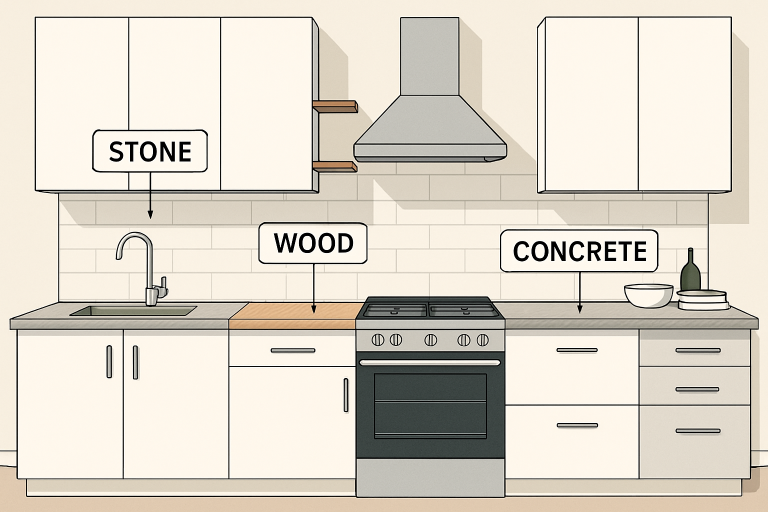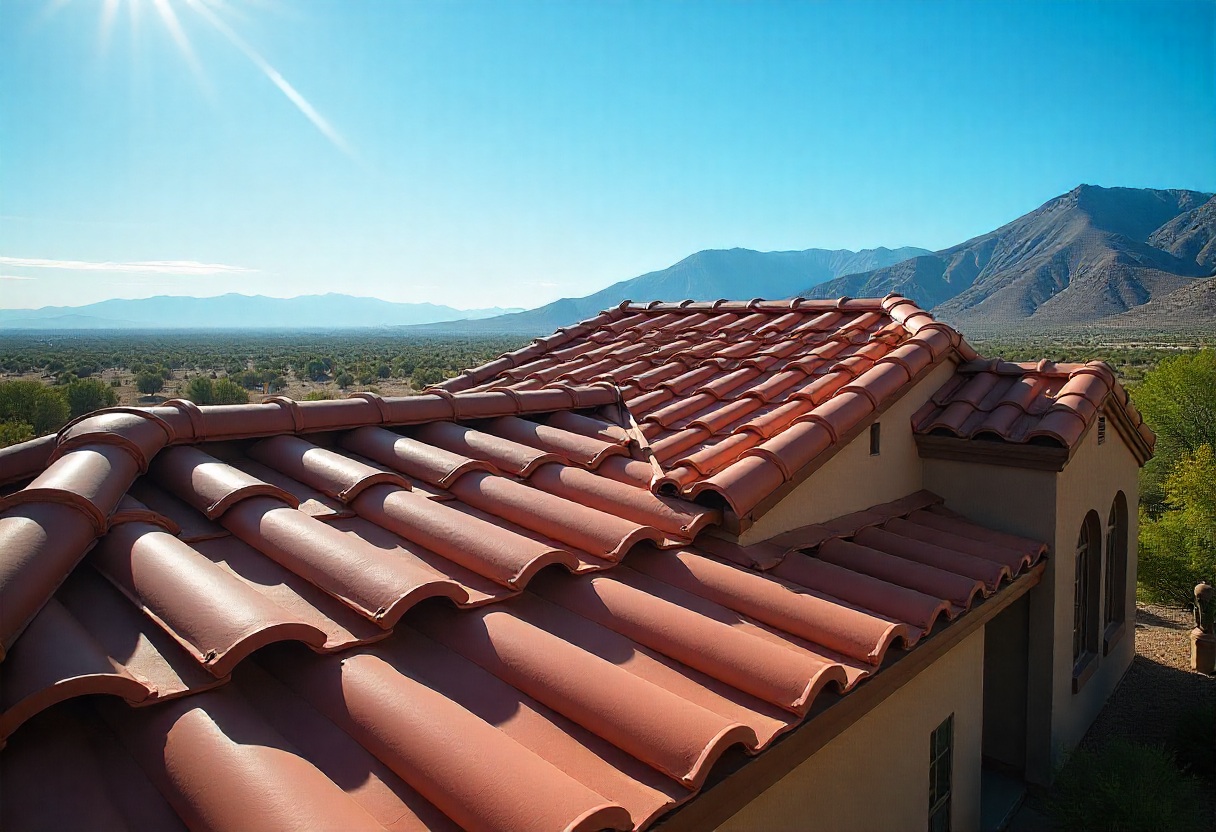Home Improvement
Managing Household Pests: Prevention Tips for a Pest-Free Home

Key Takeaways
- Household pests can cause significant damage and health issues if not managed properly.
- Prevention is more effective and economical than dealing with infestations.
- Simple lifestyle changes can reduce the likelihood of pest infestations.
- Knowing when to seek professional assistance is crucial for maintaining a pest-free home.
Recognizing Common Household Pests
Household pests can turn a cozy home into a nightmare if not addressed promptly. Common invaders such as ants, rodents, and cockroaches can wreak havoc by damaging structures, contaminating food, and spreading diseases. Taking pest control measures is crucial, but implementing preventive strategies that keep these unwelcome guests at bay is even more so. By adopting a proactive approach, homeowners can effectively reduce the risk of infestations and maintain a healthy, comfortable living environment.
The Impact of an Infestation
An infestation can lead to severe consequences if not addressed on time. Structural damage is common, as rodents can chew through woodwork and wiring, posing fire hazards. Health risks are also significant, with pests like cockroaches potentially spreading bacteria and allergens that exacerbate asthma and allergies. According to a recent report, pests in the home can lead to diseases and other health complications, highlighting the importance of addressing these issues swiftly. Professional pest control services can help mitigate these risks, ensuring a safe and healthy living environment.
Basic Prevention Techniques
Prevention begins with maintaining a clean and orderly home. Regularly cleaning areas where food is stored and consumed, closing gaps around windows and doors, and addressing plumbing leaks will reduce the likelihood of pest intrusion. Storing food in airtight containers and disposing of garbage frequently will cut off essential resources for pests. Additionally, inspecting for and repairing structural vulnerabilities can prevent entrances for these uninvited guests.
Advanced Prevention Strategies
To enhance your pest prevention efforts, consider how the exterior of your home can deter pests. Ensuring that branches and shrubs do not touch your house can prevent pests like ants and rodents from using them as bridges. Deploying non-toxic repellents and humane traps can further discourage pests without harming children, pets, and the environment. This sustainable approach to pest control aligns with an increasingly eco-conscious mindset, allowing you to protect your home responsibly.
Seasonal Pest Challenges
Pests exhibit different behaviors as the seasons change, which can influence the type and intensity of infestations. For example, ants may be more active during warmer months, searching for food and moisture. Colder months might see an influx of rodents seeking shelter from the elements. Understanding seasonal pest patterns allows homeowners to adopt timely measures, adapting their strategies according to the time of year. Reviewing these seasonal strategies can help in planning year-round pest control efforts.
Signs it’s Time to Call a Professional
While many pest issues can be managed with DIY methods, there are situations where professional intervention is necessary. Persistent or large-scale infestations often require the expertise and tools that professional pest control services offer. Signs indicating the need for professional help include gnawed wires, nesting materials, or repeated sightings despite your best efforts. Professionals provide targeted solutions, vastly reducing the time and effort required to manage severe pest problems effectively.
Long-Term Home Upkeep for Pest Control
Once you’ve achieved a pest-free home, ongoing vigilance is crucial to maintain that status. Regular home inspections can help identify new vulnerabilities that pests could exploit. Simple modifications, like adding door sweeps or fixing cracks, can serve as long-term deterrents. Establishing a habit of routine maintenance and prevention will not only safeguard your home but also foster a healthier living space for your family.
Conclusion: A Pest-Free Future
Adopting a proactive stance against pests brings numerous benefits beyond mere comfort. Implementing these prevention strategies can save time, money, and stress in the long run. As the adage goes, an ounce of prevention is worth a pound of cure. By staying informed, prepared, and vigilant, you can protect your home and family from the challenges posed by household pests, ensuring a safer, healthier future.
Home Improvement
Benefits of Surety Bonds and Construction Insurance

Managing risk is as important as working with materials in the construction industry. Surety bonds and construction insurance are two critical tools that help protect all parties involved, from project owners to contractors. Surety bonds guarantee that a project will be completed according to contract terms, while construction insurance covers losses related to property damage, injuries, or delays. Together, these safeguards build trust and reduce financial exposure during complex projects.
Similar principles apply beyond construction in other sectors where financial guarantees are required. For example, a bail bondsman agent Tennessee provides a form of surety that ensures a person’s appearance in court. Just as in construction, the core function remains the same—providing assurance that obligations will be met. Understanding these tools in broader contexts helps highlight their role in creating accountability and minimizing risk in both personal and professional settings.
Understanding Surety Bonds
Surety bonds are a cornerstone of trust and financial security within construction projects. A surety bond is a unique, three-party financial agreement that involves the principal (typically the contractor), the obligee (the party requiring the bond, often the project owner or a government entity), and the surety (an insurance or bonding company that guarantees the bond). In practice, the surety guarantees that the contractor will fulfill their contract stage. If the contractor defaults or fails to meet contractual obligations, the surety steps in, providing compensation or arranging for the work to be completed as promised. This system offers crucial reassurance for project owners, assuring them that risks of abandonment, underperformance, or insolvency by a contractor can be managed effectively.
Types of Surety Bonds
- Bid Bond: Ensures contractors will sign the contract and provide necessary bonds, deterring frivolous bids and protecting owners’ time and resources.
- Performance Bond: This guarantee ensures the contractor will complete the work as specified; if not, the surety compensates the owner or finishes the project, reducing the risk of subpar work.
- Payment Bond: Ensures that subcontractors, laborers, and suppliers are paid, minimizing the risk of legal issues and fostering trust among all parties involved.

Advantages of Surety Bonds
- Risk Mitigation: Surety bonds protect against contractor default, nonperformance, and project abandonment, giving project owners peace of mind.
- Enhanced Credibility: Contractors with up-to-date bonds show financial responsibility, which is crucial for bidding on prestigious projects and builds trust with project owners.
- Financial Security for Subcontractors and Suppliers: Payment bonds ensure suppliers and laborers receive timely payment, fostering trust and stability within the project team.
The Role of Construction Insurance
Construction insurance meets many industry needs by addressing potential losses from risks and incidents that can occur in even the best-managed projects. While surety bonds assure the fulfillment of contractual obligations, construction insurance policies focus on direct protection from physical, financial, and legal risks that may arise during the life of a building project. Insurance provides the backup needed to ensure recovery and continuity, from catastrophic events like fires or severe storms to everyday mishaps like accidental injuries.
Key Types of Construction Insurance
- General Liability Insurance: Protects contractors and project owners from third-party claims of bodily injury, property damage, and advertising injury due to construction activities. It covers legal expenses, settlements, and court costs.
- Builder’s Risk Insurance: Covers physical loss or damage to buildings under construction from fire, theft, vandalism, and certain natural disasters. It protects the structure, on-site materials, and temporary structures.
- Workers’ Compensation Insurance: A legal requirement in many areas, it provides wage replacement and medical benefits to injured employees, enhancing safety and limiting employer liability.
Benefits of Construction Insurance
- Comprehensive Coverage: Insurance addresses gaps that surety bonds do not cover, protecting against accidents, lawsuits, and property damage. This safeguards projects from financial setbacks due to various hazards.
- Legal Compliance: Many states require specific insurance for construction projects to ensure safety and timely claims. Compliance helps avoid penalties and keeps projects on track.
- Financial Protection: Insurance shields businesses from the financial strain of lawsuits, medical expenses, and losses. It covers legal defense and damages, helping to prevent bankruptcy and sustain operations in high-risk scenarios.
Integrating Surety Bonds and Insurance
Surety bonds and construction insurance are effective strategies for managing risks in the industry. Surety bonds ensure that contractual obligations are fulfilled, thereby reducing the risk of nonperformance. Construction insurance protects against job-related damages, injuries, or incidents, preventing delays and resource depletion. Integrating both instruments into contracts fosters peace of mind, project viability, and stakeholder confidence. This proactive approach enhances project delivery, time, and budget. It also strengthens professional relationships, encouraging collaboration and smoother workflows among clients, subcontractors, suppliers, and regulatory agencies.
Home Improvement
Smart and Stylish Ways to Pick Your Kitchen Countertop

Key Takeaways
- Understand the pros and cons of various countertop materials.
- Consider sustainability and eco-friendly options.
- Explore design trends to enhance your kitchen’s visual appeal.
- Balance aesthetics with functionality and maintenance requirements.
When it comes to revamping your kitchen, few choices carry as much impact as your countertop selection. The right countertop determines not only your kitchen’s appearance but also shapes your daily experience in one of the most functional rooms in your home. Countertops are central to the workflow, whether you’re preparing dinner, entertaining guests, or doing homework with the kids. Factoring in durable materials, maintenance needs, and how the countertop will interact with key elements—such as the kitchen sink—ensures a cohesive and practical result. Whether you’re exploring high-quality surfaces or shopping for kitchen sinks Cranberry Township, PA, selecting the right components is crucial for both aesthetic appeal and everyday functionality. Prioritizing a smart blend of form and function helps keep your kitchen looking great while supporting the way you live and cook.
Assess Your Lifestyle and Needs
Understanding the daily demands placed on your kitchen is crucial before choosing a countertop material. If you’re an avid cook who needs ample preparation space or if spills and accidents are common due to young kids or frequent entertaining, you may need a more resilient, easy-to-clean surface. Resources like The Spruce provide valuable insights into the pros and cons of various materials, enabling you to make an informed decision. For families who enjoy baking or hosting gatherings, a non-porous, scratch-resistant countertop will minimize long-term wear and tear. Those with a more relaxed approach might lean toward materials that offer distinct textures or a softer touch.
Explore Diverse Materials
The marketplace is filled with innovative and timeless kitchen countertop options, each with its own unique aesthetic, upkeep requirements, and durability levels:
- Natural Stone: Options like granite and marble are prized for their elegance and high resistance to heat. Both will require sealing but offer an enduring upgrade to any kitchen.
- Quartz: Quartz countertops provide an engineered alternative that’s highly resistant to stains and scratches. Their wide array of patterns and hues can fit virtually any design palette, making them a popular choice among homeowners. According to This Old House, quartz offers the beauty of natural stone with added durability and minimal maintenance, making it ideal for busy kitchens.
- Concrete: Favored for its rugged appeal and industrial look, concrete can be tailored with pigments and molds. Sealing is crucial to prevent cracking or staining.
- Butcher Block: Perfect for chefs and home bakers, this wooden option brings warmth and character, but it does require consistent oiling to prevent moisture or bacterial damage.

Embrace Sustainability
As homeowners become increasingly eco-conscious, sustainable countertop materials have risen in popularity. Recycled glass surfaces are both vibrant in appearance and robust in performance, offering a modern look with eye-catching color options. Reclaimed wood, on the other hand, infuses the kitchen with rustic appeal while preventing deforestation and reducing landfill waste. Choosing green materials isn’t just about style but also contributes to a healthier planet.
Incorporate Design Trends
Staying ahead in design ensures your kitchen enjoys a timeless yet contemporary feel. Bold veining in countertops, such as marble, introduces a dramatic element, becoming the centerpiece of your culinary space. For those who love tactile variety, mixing materials by combining a quartz island with a butcher block or stainless steel prep area provides both utility and striking aesthetics. Integrated sinks, crafted seamlessly from countertop material, offer an ultra-sleek appearance while increasing hygienic simplicity.
Prioritize Functionality
While visual impact is important, do not overlook the practical aspects of your countertop material. Prioritize features such as heat resistance for avid cooks, and an easy-to-clean surface for busy families. Stainless steel, often found in professional kitchens, is not only heat-proof but also naturally antimicrobial and easy to sanitize. For a more residential feel, choose quartz for its superior stain and scratch resistance—which is especially handy if your kitchen sees heavy use.
Budget Considerations
Evaluate your total renovation budget, accounting for not just the countertop’s purchase price but also installation and ongoing maintenance costs. While certain materials, such as marble or quartz, may come with a higher initial investment, their durability and lower maintenance needs can offset these costs over time. Conversely, wood may require periodic sanding and oiling, which adds to lifetime expenses. Planning ahead ensures your dream countertop doesn’t derail your overall project budget.
Seek Professional Guidance
Meeting with a kitchen designer or contractor brings clarity to your selection process. Professionals evaluate your specific needs, offer insight into the latest trends, and recommend the best materials for your lifestyle and budget. They can also point out potential pitfalls, such as selecting a surface that may clash with your cabinetry or flooring, thereby ensuring a unified final look.
Sample Before You Decide
Always ask for countertop samples before making your final decision. Place them in your kitchen and observe how light and shadow affect their appearance at different times of day. Test them against your appliances, cabinets, and flooring to ensure a harmonious color palette. This tactile approach allows you to envision the finished space and feel confident in your choice.
Thoughtful countertop selection balances practical requirements with visual goals, all while suiting your daily routine and design preferences. With careful consideration of material, sustainability, appearance, and expert input, you can transform your kitchen into a beautifully functional hub for your home.
Home Improvement
How to Choose the Right Roofing Material for Your Climate

Understanding Your Climate
Begin by thoroughly evaluating the local weather patterns in your area. Ask yourself how often you experience temperature extremes—are summers blisteringly hot, or do winters bring heavy snow? Consider issues like frequent rainfall, high winds, humidity, hail, or the risk of hurricanes and wildfires. Each factor imposes distinct demands on roofing materials, determining what works best regarding temperature resistance, moisture management, and structural robustness. For example, roofs in hurricane-prone regions need to withstand high winds and flying debris. In contrast, roofs in snowy areas need to hold significant weight without risking collapse. Factoring in both seasonal climate and occasional severe weather events will help you prioritize the features that matter most for your home and ensure your investment stands the test of time.
Roofing Materials for Various Climates
Hot and Arid Climates
Homes in hot, dry regions benefit from roofing materials that expertly reflect solar rays and resist potential sun damage. Prolonged exposure to intense sunlight can cause some materials to fade, crack, or deteriorate faster. Therefore, the right roofing company can help keep your interiors cool, reduce the need for air conditioning, and reduce energy costs during scorching summers. Consider these options for maximizing performance in these areas:
- Clay and Terracotta Tiles: Their curved profiles promote excellent air flow beneath the surface, enhancing insulation. The tiles’ natural thermal mass helps regulate indoor temperatures by reducing heat transfer into your living spaces, keeping rooms cooler without overworking your AC.
- Metal Roofing with Reflective Coatings: Today’s reflective metal roofing can bounce up to 70% of the sun’s powerful rays away from your home, providing significant energy savings and preventing heat absorption that would otherwise warm your attic and living areas. Metal roofing is also naturally resistant to cracks and warping caused by repeated sun exposure.
- Concrete Tiles: Like clay, concrete tiles can absorb and slowly release heat, moderating temperature swings and deepening energy efficiency. Their resilience means they withstand years of exposure despite harsh, dry conditions.
Cold and Snowy Climates
Regions that regularly deal with heavy snow, ice buildup, and deep freezes need materials engineered to withstand weight and resist freeze-thaw cycles that can prematurely weaken the roof structure. Problems like ice dams, which trap melting snow and force water under the shingles, are common in these regions—so it’s critical to pick a roofing material designed for such stressors. It’s also wise to evaluate the condition of your siding simultaneously, as moisture intrusion and ice buildup can affect vertical surfaces just as much as the roof.
Metal Roofing: The smooth surface of a metal roof encourages snow to slide off quickly rather than accumulating and adding excessive load. This feature helps minimize the danger of roof collapses and ice dam formation, which can cause extensive (and expensive) damage.
Slate Roofing: Renowned for its incredible durability, slate withstands harsh winters without cracking, warping, or absorbing water. Its heavy weight gives it excellent stability, and it resists damage from freezing and thawing cycles.
- Asphalt Shingles: Widely used for their affordability, asphalt shingles are designed to shed snow efficiently, and many newer versions include reinforcements to improve their resistance to harsh weather conditions.
Coastal and Windy Areas
Resilient, windproof, and corrosion-resistant roofing is crucial for homes facing strong winds and tropical storms. Aluminum roofing is ideal due to its natural resistance to rust and corrosion. Metal shingles with interlocking systems prevent leaks and damage during hurricanes. With its flexibility and natural oils, Cedar shakes can withstand wind and rain but require regular maintenance.
Rainy and Humid Climates
In wet and humid climates, roofing materials like Standing Seam Metal Roofs, Asphalt Shingles with Fiberglass Reinforcement, and Composite Roofs are essential for maintaining a healthy home envelope. These materials provide watertight surfaces, resist moisture seepage, and offer durability, ensuring leak-free performance even in wet and muggy conditions.
Fire-Prone and Drought-Stricken Areas
Where wildfires are a threat, your roofing choice can mean minor damage and total loss. Non-combustible, fire-rated materials protect your home from airborne embers and radiant heat.
- Metal Roofs: Naturally fireproof, metal roofs often top the charts for safety and insurance savings in high-risk fire zones. They don’t ignite, and embers that land on the roof are far less likely to cause ignition.
- Clay or Concrete Tiles: These tiles offer similar flame resistance and last decades. Their density helps block intense heat, though it’s important to ensure your roof’s structure can support the heavy weight of these materials.
- Synthetic Roofing Materials: Modern synthetic options are designed to replicate the natural look of wood or stone but are made with advanced polymers that offer Class A fire ratings. Many of these are also lighter and easier to install on roof structures.
Additional Considerations
- Energy Efficiency: Reflective and insulated roofing materials can significantly reduce cooling expenses, particularly in areas with strong sunlight. For instance, reflective-coated metal roofs lower household energy costs by up to 40% in summer.
- Durability and Maintenance: The upfront price of roofing materials is only part of the equation. Consider the lifespan of each option, how much maintenance it will require, and if repairs will be simple or costly—these factors can lead to considerable savings over decades.
- Aesthetic Appeal: Your roof is one of your home’s most visible features. Choose a material and style that harmonizes with your home design and boosts curb appeal, enhancing your property value.
Consulting Professionals
For the best possible results and lasting peace of mind, partner with expert roofing contractors who understand local climate demands and current best practices. Professionals can assess your home’s structure, recommend appropriate roofing materials, and guarantee safe, precise installation. They have the experience necessary to navigate regional building codes, manufacturer warranties, and any unique requirements specific to your property. Ultimately, their skilled guidance helps protect your investment so your home stays comfortable, safe, and attractive for years.
By carefully considering your local climate, prioritizing the right features, and seeking professional advice, you’ll be able to confidently choose a roofing solution that delivers outstanding comfort, durability, weather resistance, and value—securing your home’s future against whatever Mother Nature brings your way.

 Travel2 years ago
Travel2 years agoPractical And Essential Car Interior Accessories To Add Comfort And Convenience To Your Drive

 Business2 years ago
Business2 years agoTop Reasons Why you Need to Consider Outsourcing Real Estate Photo Editing

 Business2 years ago
Business2 years agoDead And Co Setlist What They Played At The Gorge Amphitheatre

 Featured2 years ago
Featured2 years agoHow to Make a Sports Career in India

 Health2 years ago
Health2 years agoGarlic Is The Best Vegetable To Treat Heart Problems

 Sports2 years ago
Sports2 years agoHow to watch the ETSU game -What are the benefits of watching the ETSU game?

 Health2 years ago
Health2 years ago5 Reasons to Choose Turkey for Dental Treatments

 Travel2 years ago
Travel2 years agoSpectacular Hot Air Balloon Rides in Goa
